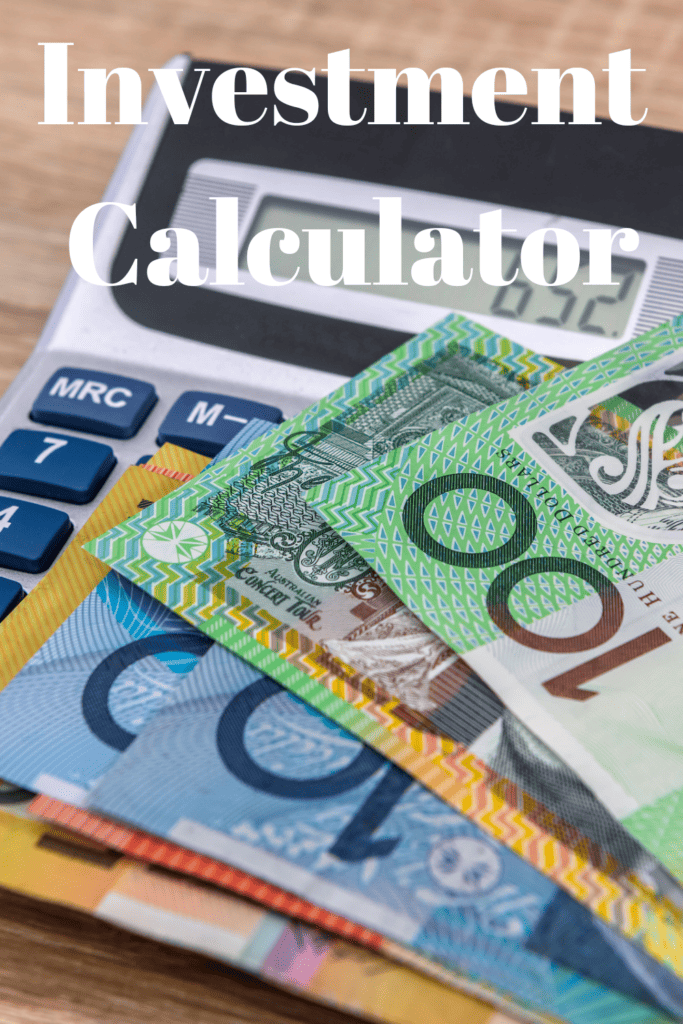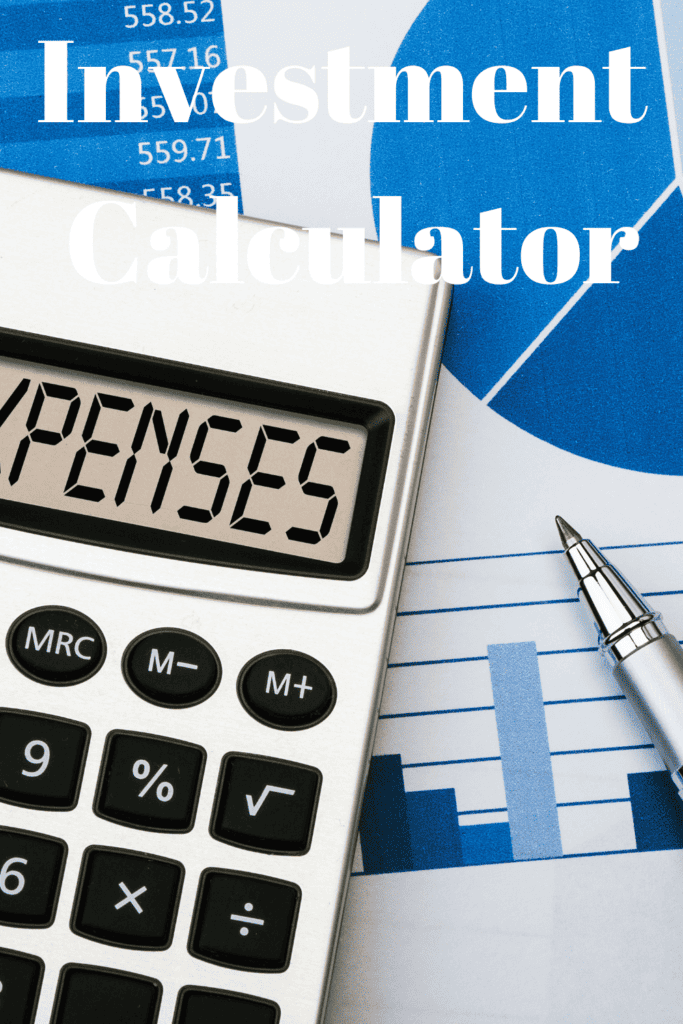Investment Calculator Overview
Investment Calculator
How to Use an Investment Calculator

Utilize this calculator to see how your investments can grow with compound interest over time. It will enable you to gauge if they are meeting their goal as planned or identify factors which could hinder their return.
Start by inputting the initial amount you plan to invest, the desired interest rate and number of years you plan to hold it for. Remember: the longer you hold onto an investment, the more compounded interest builds up over time and higher your future balance will become.
Initial Investment Amount
Initial investment amounts represent the amount you plan to put aside upfront in your investment portfolio. The more money you put down initially, the higher your potential returns (assuming an acceptable rate of return). Therefore, our investment calculator provides an easy and precise method for calculating initial investments to reach goals or break even. It will also assist with finding required rates of returns needed to achieve goals set for you as an investor. Our tool provides quick calculations without complicated steps!

Your decision regarding whether or not to invest in a taxable or tax-advantaged account depends on your financial circumstances and investment goals, so the calculator provides both scenarios so that you can select which best meets them.
One key consideration when investing is how long it will take you to accumulate your investment. Compound interest makes investments held longer more effective. But as more time passes, more risk you assume and lower returns may result.
Beginning investing with low-risk investments like certificates of deposit is an excellent way to begin building wealth over time, and most banks in the United States provide them with FDIC protection and guarantees for guaranteed rates of return. You’ll gain a clear idea of how your money grows over time with this affordable method of earning interest.
Next step in the calculation process: setting your desired annual rate of return. This will give you an idea of what your investments could be worth in future and help identify which one are right for you. Keep in mind that actual rate may differ due to market changes and interest rate fluctuation – so keep this estimate as an approximate target return figure only.
Finally, input the initial investment amount and monthly contribution amount you intend to make each month, select your number of years of investing, as well as initial amount that you’re planning to put towards your project and click “calculate.” Once complete, this tool will calculate all relevant fields automatically while taking care of compound interest calculations for you.
Desired Interest Rate
Your desired annual return percentage on an investment. Typically this is determined by your investment goals and risk tolerance; additionally it plays an integral part in how quickly investments grow – the higher your target interest rate, the quicker investments will grow.
Inflation erodes your savings and investments’ purchasing power, diminishing their actual rate of return. To account for this, the Investment Calculator allows you to check a box that will automatically increase future investment amounts by inflation rates in future investments – this ensures they keep pace with cost of living increases.

Compound interest works on the principle that P(initial investment amount), N(periodic investment amount), R (interest rate over time), and N (number of periods)/T(investment duration). You can input these variables into our calculator for future value calculation and to observe how different variables impact investment results.
Compounding is an invaluable concept in personal finance, helping you increase earnings over time through its “snowball effect.” With this calculator you can see how compounding can increase savings by helping to compare investment offers more confidently.
If you are contemplating investing in fixed income assets, our Bond Calculator can help you ascertain how your initial investment will grow over time and assist in devising an effective debt payoff strategy that takes advantage of compounding interest.
No matter which investment vehicle you select, the key factor should always be your financial goal. While our calculator provides a generalized overview of your situation, for major decisions it is always advisable to seek the advice of an accredited advisor prior to making any definitive choices.
Investment Duration (in years)
Duration is an integral factor when it comes to assessing an investment’s rate of return, with longer investment duration bringing more potential for growth but also increasing risks of loss. When assessing a prospective investment, it is vital to take all aspects of its nature into consideration, including duration.
Duration is the time required for all of a bond’s cash flows, including coupon payments and its maturity value, to reach maturity. There are various methods of measuring duration; one approach uses Macaulay duration with yield-to-maturity as its reference point while modified duration measures its sensitivity to changes in interest rate conditions by taking into account both Macaulay duration and either its yield-to-maturity yield or market interest rate as inputs.
Dollar duration provides another effective means of measuring bond duration; it measures its price sensitivity to changes in market interest rates. Investors find this measure extremely helpful since it gives an estimated dollar amount of changes that would occur with specific duration calculations.
No matter which method is chosen to calculate duration, it’s essential that investors understand its implications on an investment portfolio. A higher duration indicates an increased sensitivity to interest rate changes that could directly affect its yield to maturity (YTM) value; additionally it can also be affected by credit risk and fluctuations in rates.
Understanding the basics of investing is a great place to start, but having an expert on your side can make all the difference when it comes to long-term planning and achieving financial goals. Connect with an Ameriprise advisor near you today to discuss your investment goals and see how our approach can help you meet them!
Total Investment
Investment Calculator is an invaluable tool designed to calculate the value of initial or periodic investments over a specified time. Users can customize it easily by entering values such as initial investment amount, desired rate of return and number of years to accumulate investments; there is even the ability to adjust for inflation!

Inflation refers to the gradual rise in prices across an economy that gradually reduces your purchasing power over time. When considered in investment calculations, accounting for inflation helps show you what actual, realized growth your investments have experienced compared to their investment potential – so the longer your money invests for, the more purchasing power it will gain over time.
Rate of return refers to the percentage change in original investment amount over a specified time. A higher return will provide greater profitability on your investments; individuals can identify what their ideal rate of return would be depending on goals, investment horizon, and risk tolerance.
If you tick the “Show All Totals After Inflation,” the calculator will calculate all values using an annual compounding method of interest, meaning your investment will earn interest on its earnings and make more compound interest each year – this is what drives investment calculators and is one of the key ways they help grow investments over time.
Once the calculator is finished, you will receive an investment projection that estimates how much your investments would have grown by the end of your selected time period. Compare this projection against actual retirement savings accounts to see whether you are on track towards reaching your investment goal.
Bear in mind that your projected return does not factor in taxes or fees associated with purchasing or selling assets, such as those found in IRAs and 401(k)s. For an accurate picture of your investment, always factor these additional expenses into account when analyzing any transaction involving taxes and fees.
